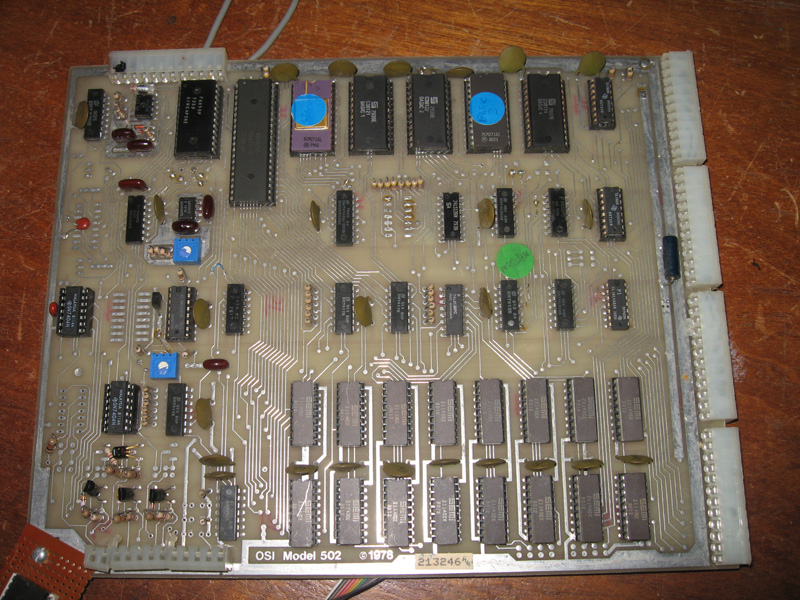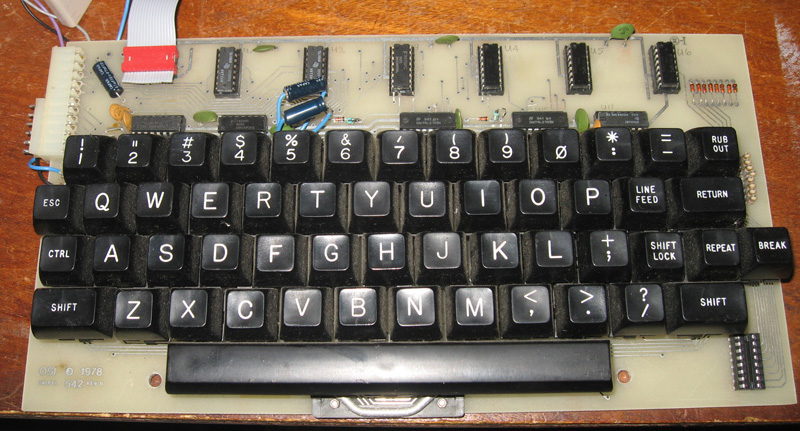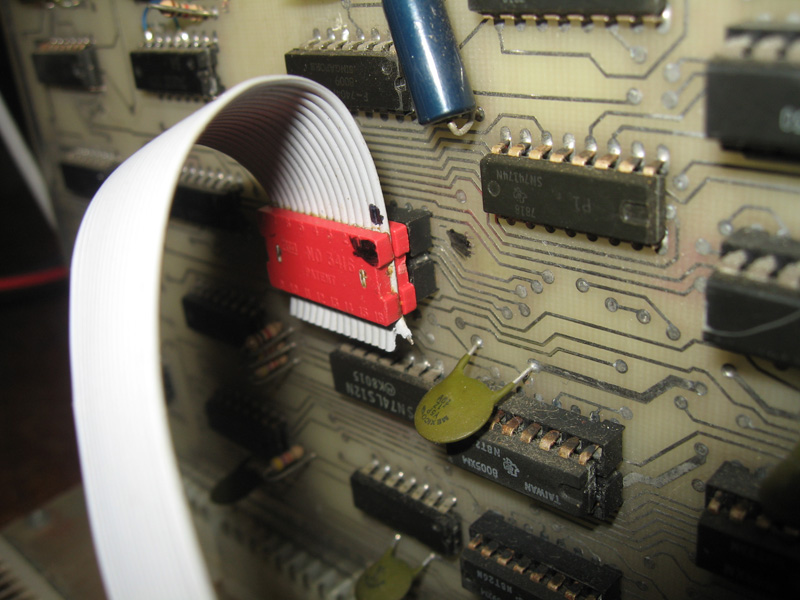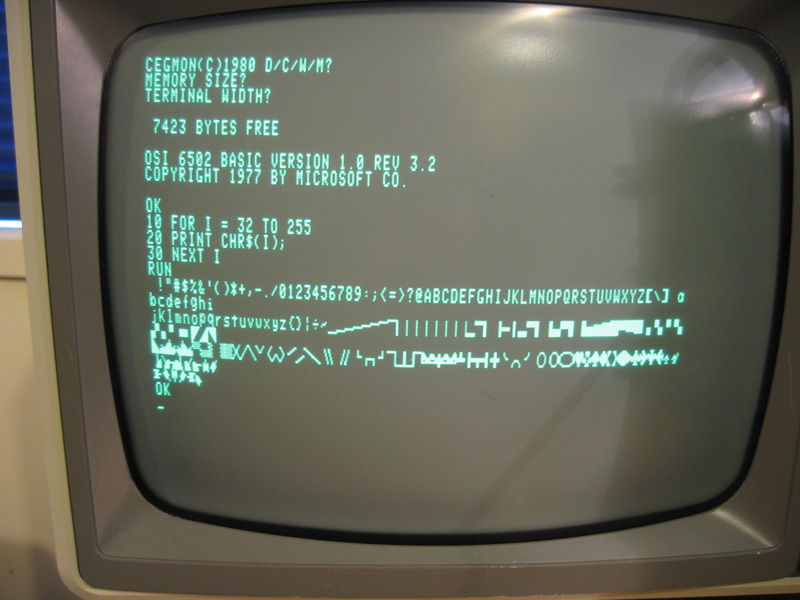502, 540 and 542 Ohio Scientific Instruments (OSI) boards: Old school computing circa 1978
Introduction
About six months ago I wrote about a OSI Challenger 4P I salvaged from a jumble of donated OSI gear. Today I had an opportunity to sort through more of the cache.
A bare board system
I pulled this from a box. It looked like a dog's breakfast with wires and connectors everywhere (Figure 1).

Figure 1. A wired up something from the OSI haul
Essentially it was two boards plugged into a backplane and wired up to a stand-alone OSI keyboard. A black 5v AWA PSU seemed to be its obvious companion. But what was it? Was it a complete computer or a part of something larger?
Reading the board labels I discovered they were (from left to right) a 540 revision B video board (capable of colour) and a 502 CPU board. Both boards were the same as those in the OSI C4P I wrote about previously but here they were naked. Two leads attached to the 502 seem to be serial connectors for cassette in/out although I didn't test them. There was also some weird addition to the 502: a DM 74LS154N bolted into the left hand corner. Who knows what this did?

Figure 2. The 502 board

Figure 3. The 540 video board
The keyboard case contains a 542 board with keys. As there doesn't seem to be an image on the web, here is a picture of it out of the case (Figure 4).

Figure 4. The 542 keyboard naked
The system all together then, was a complete computer albeit without screen and mass storage peripheral.
Issues and fixes
I had to cobble up a video lead before I could see if the contraption worked. Once I knew where this went on the video board (thanks to Mark's Ohio Scientific (OSI) Board Catalog, Dave's OSI repository and Mark Csele's OSI site (all great OSI resources)) wiring it up was easy. I also noticed a 74LS151 chip was missing on the 540. Checking the circuit diagrams this IC appeared necessary so I scrounged around in my spare chip box and found a replacement.
I didn't expect it to fire up first time and of course it didn't. The video seemed to be working but the screen was frozen. This was rectified by reseating all the socketed chips (i.e. most of them) to knock the oxidation off the legs. That worked, and after pressing <BREAK> I saw the familiar OSI D/C/W/M menu choices.
However. that is all I saw. No amount of keyboard pressing would get me any further. An investigation revealed no power was getting to the keyboard through the keyboard ribbon cable. I isolated the fault to a dodgy cable connector (Figure 5).

Figure 5. It's not obvious to the naked eye but this connector was faulty
This was fixed and I was soon on my way. I now had the familiar boot up screen. I ran a small program to reveal the character set. As you can see, there is lower case and some useful graphic symbols there (Figure 6).

Figure 6. OSI 540 Boot-up and character set
So..it ain't pretty but more vintage computing hardware lives again.

Figure 7. A OSI 1978 exposed-board computer - working!
Reflections
Lacking a case and mass storage means this arrangement would not have been practical as a home or business computer (even in the late 70's) although it could have been the beginnings of one. Given the system has good screen real-estate, lower case, graphic symbols and a choice between monochrome or colour, the potential is there. No, their niche would have been with the electronics buffs in their workshops. In fact by using an exposed-board system like this one, I can get the sense of what those computer hobbyists in the 1970s would have experienced. Tracks are wide, ICs are all off-the-shelf and the boards are easy to modify, experiment with, diagnose and repair. You would have learnt a lot about hardware principles just by playing with them. Remember too, that just OWNING your own computer back in 1978 was a big thing, even if it wasn't pretty. Although consumer computers like the Apple II, Commodore Pet and TRS-80 M1 were around by 1978 they had only recently appeared and were relatively expensive compared to unhoused boards.
In those years numerous hobbyist tinkerers would have spent many happy hours programming and hacking their OSI boards on a rig similar to the above. Had I been in the position to do so, I would have enjoyed it too!
Tez
14th June, 2014
| Tweet |